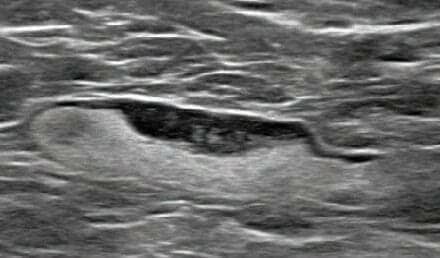Diverse diseases like breast cancer can present challenges for clinicians, because while one patient’s tumor may be different from another’s, the individual cells within the tumor of a single patient can also vary. But tumors are typically examined with a biopsy, which captures only a small sample of the cells.
However, according to a new study1 from researchers at Penn Medicine, MRI combined with radiomics—an emerging field of medicine that uses data characterization algorithms to extract more information from medical images than the human eye can discern—could help to characterize the heterogeneity of cancer cells within a tumor and allow for a better understanding of the causes and progression of a person’s individual disease. Fully understanding the makeup of a tumor can pave the way for better targeted, individualized treatment.
“If we’re only taking out a little piece of a tissue from one part of a tumor, that does not give the full picture of a person’s disease and of his or her response to specific therapies,” says principal investigator Despina Kontos, PhD, associate professor of radiology in the Perelman School of Medicine at the University of Pennsylvania. “We know that in a lot of instances, patients are overtreated, getting therapy that may not be beneficial. Or, conversely, patients who need more aggressive therapy may not end up receiving it. The method we currently have for choosing the appropriate treatment for patients with breast cancer is not perfect, so the more steps we can take toward more personalized treatment approaches, the better.”
Kontos and her colleagues wanted to determine whether they could use imaging and radiomics for more personalized tumor characterization. Using MRI, the researchers extracted 60 radiomic features, or biomarkers, from 95 women with primary invasive breast cancer. After following up with the patients 10 years later, the group found that a scan that showed high tumor heterogeneity at the time of diagnosis—meaning a high diversity of cells—could successfully predict a cancer recurrence.
“Our study shows that imaging has the potential to capture the whole tumor’s behavior without doing a procedure that is invasive or limited by sampling error,” says the study’s lead author Rhea Chitalia, a PhD candidate in the School of Engineering and Applied Science at the University of Pennsylvania. “Women who had more heterogeneous tumors tended to have a greater risk of tumor recurrence.”
The researchers retrospectively analyzed patient scans from a 2002–2006 clinical trial conducted at Penn Medicine. For each woman, the group generated a signal enhancement ratio (SER) map and from it extracted various imaging features in order to understand the relationship between those features and conventional biomarkers (such as gene mutations or hormone receptor status) and patient outcomes.
They found that their algorithm was able to successfully predict recurrence-free survival after 10 years. To validate their findings, the group compared their results to an independent sample of 163 patients with breast cancer from the publicly available Cancer Imaging Archive.
While imaging may not completely replace the need for tumor biopsies, radiologic methods could augment what is currently the “gold standard” of care, Kontos says, by giving a more detailed profile of a patient’s disease and guiding personalized treatment. Next steps for the research team will include expanding the analysis to a larger patient cohort and also further exploring which specific markers are more predictive of particular outcomes.
“We’ve just touched the tip of the iceberg,” Kontos says. “Our results and the validation study give us confidence that there are many opportunities for these markers to be used in a prognostic and potentially a predictive setting.”
This study was supported by the at the National Institutes of Health.
- Chitalia R, Rowland J, McDonald ES, et al. Imaging phenotypes of breast cancer heterogeneity in pre-operative breast Dynamic Contrast Enhanced Magnetic Resonance Imaging (DCE-MRI) scans predict 10-year recurrence. Clin Cancer Res. 2019. doi:10.1158/1078-0432.CCR-18-4067.
Featured image:
Magnetic resonance imaging of breasts. Photo © Vesna Njagulj courtesy Dreamstime (ID22481277).




